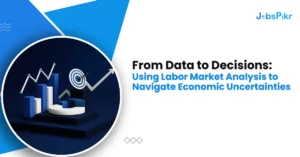Performance management often confused with the annual appraisals. End-of-the-year appraisals are directly tied to variable pay. And more often than not, increments do very little to judge the performance of individuals. It does not help them understand their strengths and weaknesses or improvement areas either. Employee performance management is not a simple affair. If you do not get it right, employees might feel dissociated with the work and your attrition rates could go up.
It is important that you maintain a constant communication bridge with every employee and update them about their work outputs and performance at regular intervals. This helps employees improve their performance and in the pandemic time, even save their jobs. In the COVID-19’s volatile atmosphere, it is absolutely necessary to set the expectations and share regular employee performance’s feedback, to help save jobs and costs to the organization.
Stages of Employee Performance Management
If you want to roll out new performance management metrics and processes without employee consideration and planning, you might face resistance to the new workflows. It is beneficial to connect both managers and stakeholders so that they are more involved in the process. Also, ensure to hire the right talent by collaborating with staffing agencies and recruitment firms.
Planning: Open communication between the reporting manager and the employee is the key to planning. Clear objectives, SMART goals, and expectations setting are the focus in this stage.
Execution: Empowering the employee to achieve the set results, and help them execute and achieve the goals is crucial. With the right planning and execution, you can create a sense of awareness and address all the employee pain-points.
Continuous Tracking of Metrics: Regular sync-ups, monthly updates, one-on-one meetings can help keep the reporting managers and the employees on track. Clear performance metrics need establishing, followed, and tracked.
Review and Feedback Cycles: Even if you set up an exemplary performance management system at your company, you cannot expect it to be relevant forever. Hence, it is important to take continuous feedback from all the stakeholders about how comfortable they are with the current system, what changes they would prefer, and more. These changes need integration into the system based on priority.
Steps to Better Employee Performance Management
Here are some procedures that companies should follow to design a better employee performance management system:
Recognition of Employees: Employees perform better when their efforts recognized. Whether it is a crucial project, extra working hours, or extra responsibilities, a performance review should reflect and report these.
Transparent Feedback and Communication: HR processes related to employee appraisals. Increments and promotions have to be structured at every level and department. Any change in the process should openly be communicated to all. Regular feedback and metrics can help make things more transparent.
Opportunities to Improve: Constructive feedback is a necessity for performance improvement. The right guidance can be the make or break factor when it comes to employee motivation.
Focus on Coaching and Not Appraisals: Performance Management could easily reduce to a mundane task. Instead, if companies can coach employees throughout the year and conduct an all-round performance review, it will be far more beneficial to all.
Feature-Based OKRs: Create feature-based OKRs so that employees have better focus. OKRs given to employees early on and could contain both targets as well as projects.
Opportunity to Choose Goals: At times, one may want to switch tracks or move to a different project. Employees allowed to create their own goals that help employees gain some personal growth and fulfillment.
Discuss the Quality of Work, Not Hours: In many organizations, it is the norm for bosses to count the hours that an employee worked for. It is imperative that this practice phased out and work quality gets discussed and debated. Not the number of hours one puts in.
Employee Performance Management in the time Pandemic
COVID-19 has made most employees work from home to maintain social distancing practices to slow down the spread of the virus. In times like these micromanagement and counting the hours of login are neither recommended nor feasible. Instead, you can track the quality of work and focus on work completion, employee responsibility. Appreciating those who take on the responsibility of taking the extra leap to make sure that the team continues to work together towards a common goal is a must. While this may be a down-time for many things, when it comes to performance management techniques, this is the best time for it to evolve.
How Does It All Add Up?
If I had to sum up the biggest benefit of putting in all these efforts, I could do it in just two words — “Lesser attritions”. Today, organizations are adopting an employee-first approach with employee performance management software. If your employee’s taken care of, they will surely take care of the customers they have. Employees who feel valued will value the work they do and the company as well. Loyal, long-standing employees will grow to take up leadership positions at your company. The result, lesser attrition, and better productivity. JobsPikr’s data extraction services is sure to help you hire the best talent, thereby enhancing employee performance.




